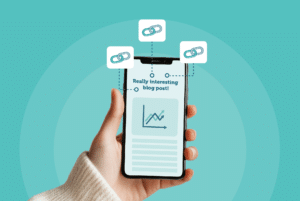Link Building Outreach and Follow-ups: Key Rules to Earn Coverage

If you work in any form of PR where you’re in contact with journalists frequently, you’ll know you have to be strategic in the way you approach them. Yes, essentially you’re just sending an email, but there is so much more to it than that. You’re selling your campaign and/or a spokesperson to them, and you only have a few lines to get your pitch across.
Your outreach is vital - but what about following up? We've written this post to share some key rules and insight for both email outreach and follow-ups, to help you gain more coverage and links from your campaigns.
Outreach
As everyone in the digital PR industry knows, journalists receive hundreds of emails a day, so what do you need to do to stand out in a crowded inbox?
Let’s say you’ve built your link building campaign, it’s good to go and everyone in your team is fully clued up on all the angles and story hooks. You now need to go out and land some coverage and links from some top-tier publications, so, how do you do that?
At this point, it’s key to make sure your pitch email has absolutely everything the journalist may need in order to cover your story: key statistics, possible headlines, images, an expert comment/quote, a press release.
But, remember the first thing they’re going to see when you email them is your subject line - so make sure it's a good’un.
We like to follow the ‘INTRO’ rule:
- Interesting & impactful
- New & happening now
- Tight - less than 10 words
- Right & accurate
- Outstanding - essentially, is it newsworthy?
Of course, you also need to approach journalists who are likely to cover a piece on the subject of your story - make sure you do your research and show the journalist you’ve clearly taken your time in getting to know what they want from a story.
Read More: The 2022 State of Link Building Report
Follow-ups
Every PR has been there when you’ve pinged your super-tactical email out to a bunch of journalists, it’s been a couple of days and you’ve still not heard back or gained any coverage.
It’s important to remember at this point that journalists are receiving hundreds of emails a day and can’t respond to them all, so don’t beat yourself up. But, we now find ourselves in limbo - do we give them a cheeky little follow-up email to see if they’re interested in our story, or do we back ourselves and pray that our banging, super-personalised email is enough to get through, and most importantly earn a link?
I’ve been in PR - both traditional and digital - for a good few years now, and always find myself weighing two thoughts:
- My email was perfect, the story is great, they’ll feature it when the time is right.
- They’re receiving so many emails a day, it may have got lost in their inbox so I'll just give them a polite email to let them know I’m here if they need anything else.
Yes, there’s a third option, that the story isn’t of interest to the journalist, but if you’ve done your homework on the topics they write about, you should be confident that it is.
It seems there is no right or wrong approach to this, but we wanted to dig into this a little deeper and see what the rest of the industry was thinking - so we set up a Twitter poll.
If you're a journalist, I'd appreciate your thoughts on this...some journos appreciate a follow up email to remind them of a campaign, while others find it irritating/it clogs up their inbox even more. Vote below #journorequest #prrequest
— Aliyah Loughlan (@AliyahLoughlan) January 16, 2020
With the results being almost a 50:50 split we found ourselves back at square one, with no real answer. However, the comments and feedback we got from PRs and journalists were great. Here’s a sample of them:
‘Be tactical - we don’t send out blanket follow-up emails, but now more than ever (during Coronavirus), it’s important to show the journalist there’s actually a human behind the pitch email who can help them with absolutely anything they need’.
‘Sell a story, not a campaign - if your pitch email has everything they need, follow up in a genuine way and ask if there’s anything else they need to feature this story. It might be something as simple as an extra quote or statistic to make it more newsworthy’.
‘Don’t pester - if you’re looking to follow up, don’t do it immediately. Leave it a few days, that way you know the journalist really has maybe not seen the email. Imagine it the same way as receiving a sales email follow up within a few hours, it’d be annoying, right? So stick to, at least, a one day, if not two day rule’.
This confirms the approach we’ve been taking toward follow-ups at Aira. However, now more than ever it’s important to listen to journalists and communicate in a meaningful and helpful way.
If you’re reading this as a PR newbie in the digital industry and you want a little more information on how you can better your skills online, check out our post on Traditional PR vs Digital PR, which talks about newsjacking and reactive outreach. You might also find some useful tips in these posts about link building ideation and more tips on pitching journalists.






